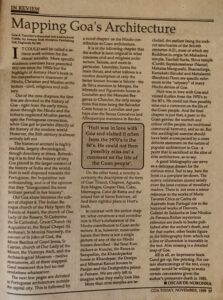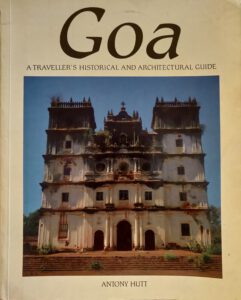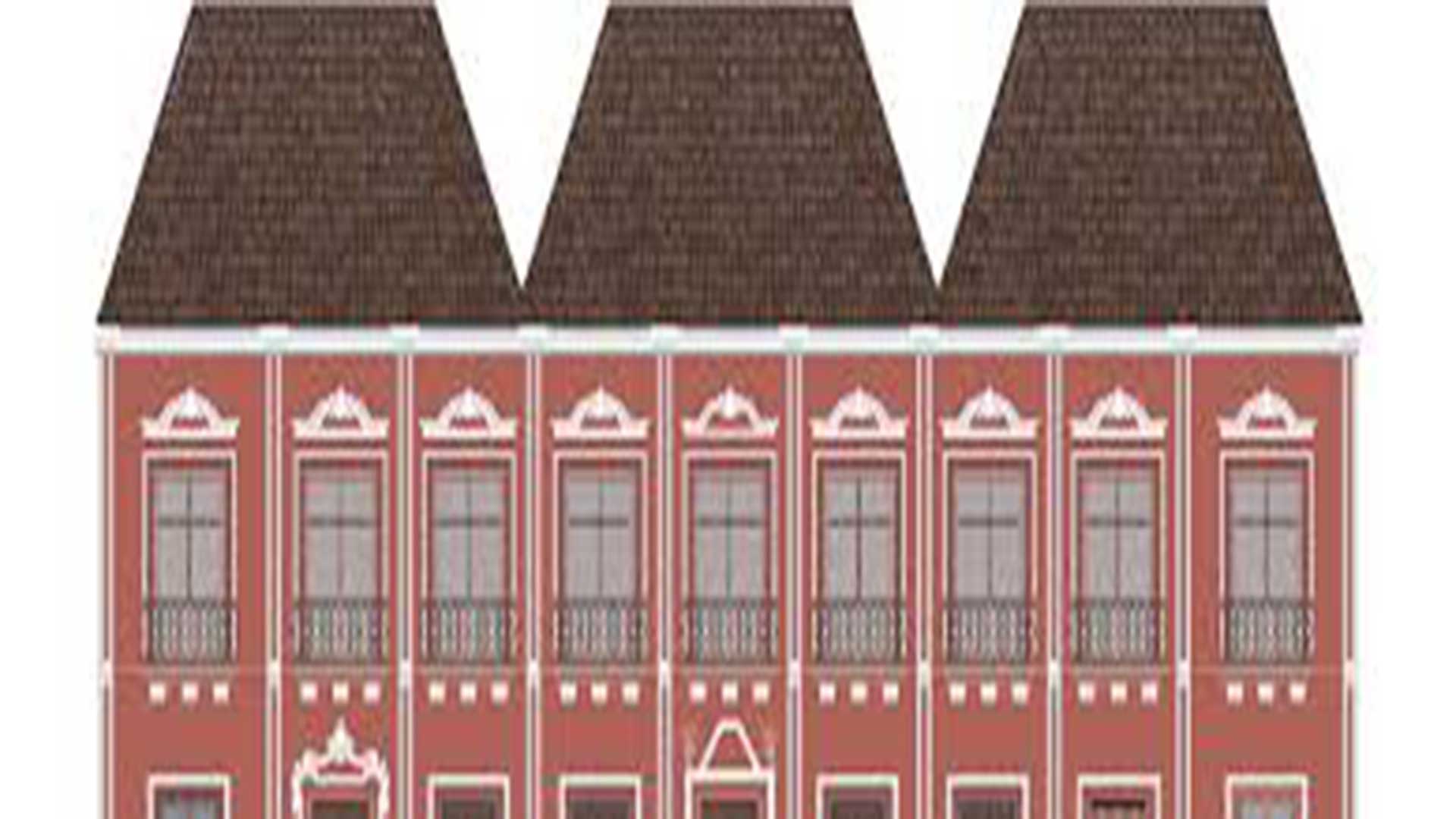Mapping Goa's Architecture

Goa - A Traveller's Historical and Architectural Guide, by Antony Hutt. Scorpion Publishing Ltd, England. Rs 200
It could well be called a serious work written for the casual traveller. More specific academic exercises have preceded this one since the 1950s but the highlight of Antony Hutt's book is his comprehensive treatment of Hindu, Christian and Muslim architecture – civil, religious and military.
Out of the nine chapters the first five are devoted to the history of Goa – right from the early times down through the Hindu and the hitherto neglected Muslim period, up to the Portuguese connection, when Goa got to partake directly of the history of the modern world. However, the 20th century is almost entirely left out.
The historical account is highly readable, largely chronological, though desultory at times. Refreshing it is to find the history of tiny Goa placed in the larger context of the history of India and the world. Hutt is well disposed towards the Portuguese, the Inquisition notwithstanding, and is of the opinion that they "inaugurated the most brilliant period in her history".
Old Goa alone becomes the subject of chapter 6. The Indian Baroque church of the Holy Spirit (St Francis of Assisi), the church of Our Lady of the Rosary, St Catherine, the Cathedral See, Grace Church (St Augustine's), the Royal Chapel (St Anthony), St Monica Nunnery, the convent of St John of God, the Minor Basilica of Good Jesus, St Cajetan, church of Our Lady of the Mount, the Viceroys Arch, and the Archaeological Museum – twelve monuments, all of them mapped. Good treatment this but no real revelations whatsoever.
The next few pages are devoted to Portuguese architecture outside the capital city. This is followed by a novel chapter on the Hindu contribution to Goan architecture.
It is in the following chapter that the author is least original in what concerns civil and religious architecture. Salcete, and more in particular, Loutulim, forms the main thrust, and what follows is a routine description of only the better known houses in Salcete – the da Silva mansion in Margão, the Miranda and Figueiredo houses in Loutulim and the Menezes Bragança in Chandor, the only exceptions this time being the Salvador Costa house in Loutulim and perhaps also the Souza Gonçalves and Albuquerque mansions in Bardez.

On the other hand, a novelty is certainly the description of the forts of Goa: Tiracol, Chapora, Aguada, Reis Magos, Gaspar Dias, Cabo, Marmagoa, Cabo de Rama and the inland fort of Santo Estevam, all find their rightful place in Hutt's book.
In contrast with the earlier chapter, what constitutes a real contribution is Hutt's elaboration of the Hindu contribution to Goan architecture. It is, however, most unfortunate that there is not a single picture of any of the six Hindu houses described – the Sinai Kundaikars in Kundai, the Ranes in Sanquelim, the Khandeparkar house in Khandepar, the Dempo and Mhamai Kamat houses in Panjim and the Deshprabhu palace in Pernem. We are only left to imagine what they really look like.
More than nine temples are included, the earliest being the rock-cut sanctuaries of the 3rd-6th centuries A.D., most of which are Buddhist in origin; Sri Mahadeva temple, Tambdi-Surla; Shiva temple (Curdi), Saptakoteshwar (Naroa); Mahalsa, Mangueshi, Shantadurga; Kamakshi (Siroda), and Mahalaxmi (Bandora). There are specific references to the "odyssey" of many Hindu deities of Goa.
Hutt was in love with Goa and visited it often from the 1970s to the 80s. He could not then possibly miss out a comment on the life of the Goan people. And the final chapter is just that, a paen to the Goan genius: the warmth and colour of the people, the traditional communal harmony, and so on. But this sociological exercise should have been accompanied by a more definite statement on the nature of popular architecture in Goa – a point that is sacrificed at the altar of elite architecture, so to say.
A good bibliography can serve as a delicious dessert for the curious mind. Sad to say, here the book is a complete let-down. The scanty information cannot satisfy even the least curious of travellers/readers. There is not even a minor reference to the works of Mário Tavares Chicó or Carlos de Azevedo from Portugal nor to the historical works of Danvers, Gabriel de Saldanha or José Nicolau da Fonseca. Rather mysterious references are made to books published after the author's death, and for that matter, other books figure in the bibliography from which not a line or illustration is traceable in the text. Also missing is a detailed map of Goa.
All in all, an impressive book. Good get-up, fine printing. For certain shortcomings of the text, every reader would be willing to make certain concessions given the author's premature death in 1985.
(Goa Today, November 1989)
